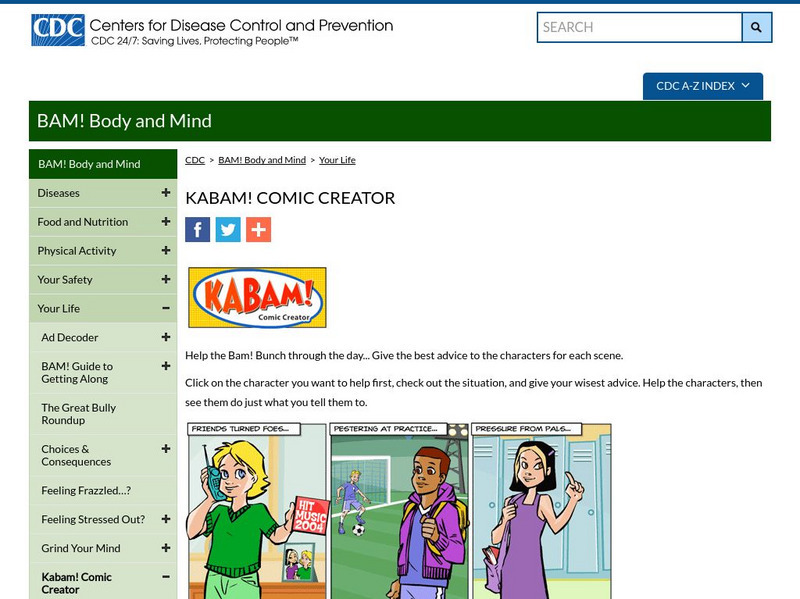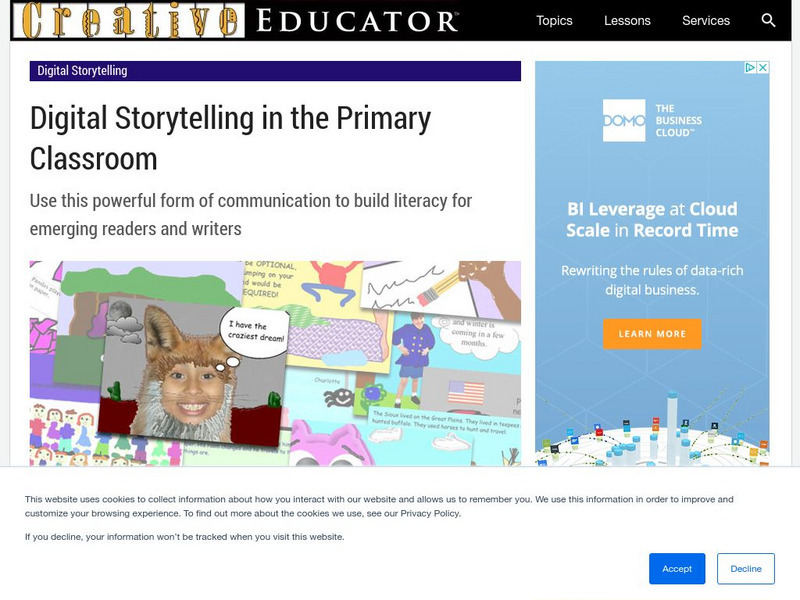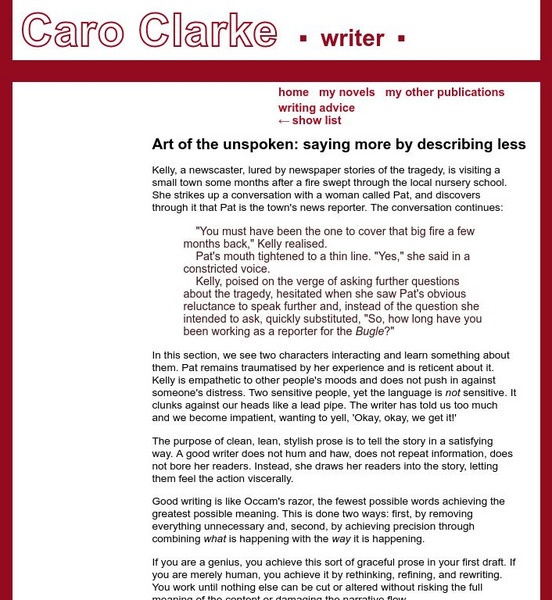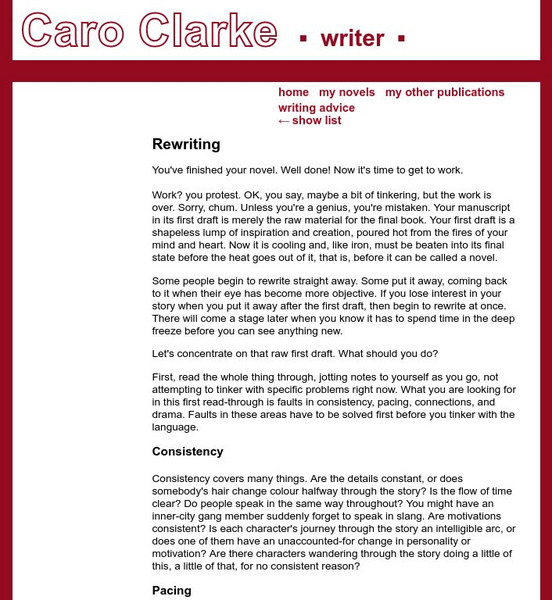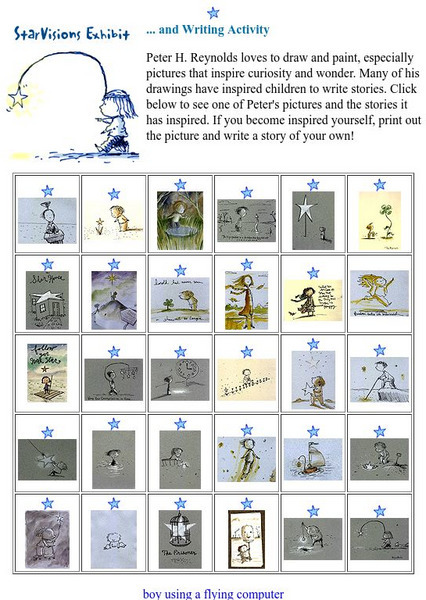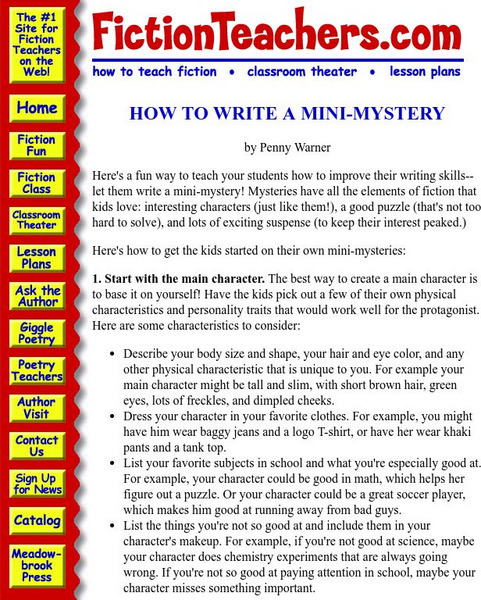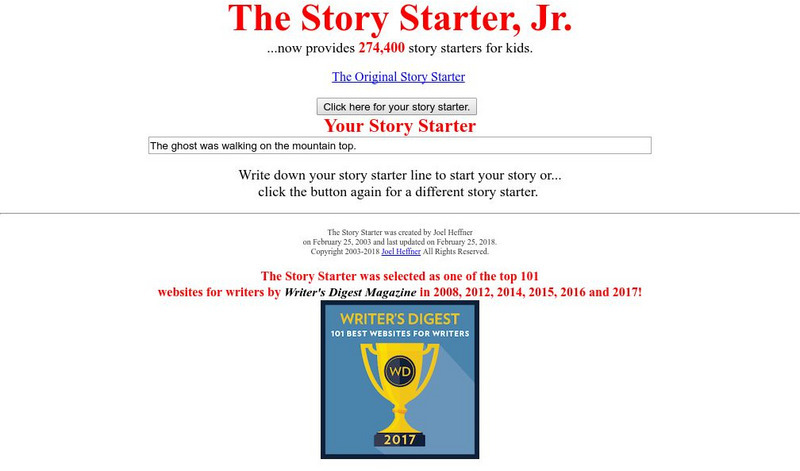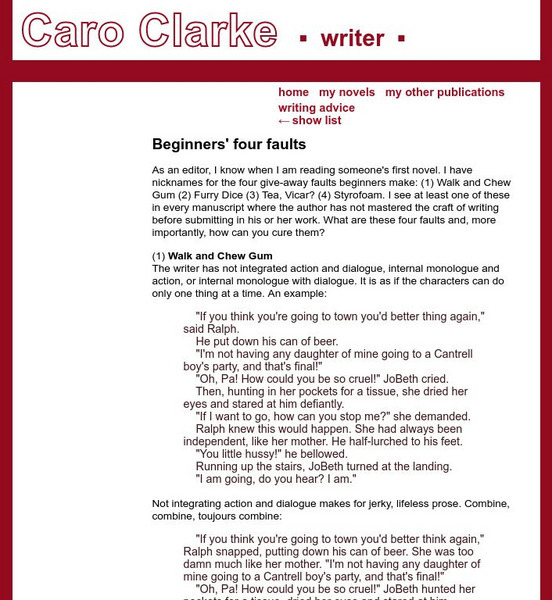PBS
Pbs Teachers: Story Writing With Arthur
This series of 12 downloadable activities teach students some basics of story writing, using books or videos from the PBS "Arthur" series as a springboard. Activities include creating story maps, asking questions about characters and...
Centers for Disease Control and Prevention
Centers for Disease Control: Bam! Your Life: Kabam! Comic Creator
Students learn about making choices when dealing with bullies, peer pressure, and conflict, then create their own comics, using speech bubbles to write dialogue, in response to what they have learned. Requires Adobe Flash.
Crayola
Crayola: Counting 'Til the Pigs Come Home (Lesson Plan)
A fun lesson plan for younger students incorporating art, math, and writing. Student create their own counting stories, and illustrate them. Also provides resources and adaptations. (To access this lesson plan, you must register with...
Crayola
Crayola: Story Spinners (Lesson Plan)
A lesson plan where students make their own "story spinner" and create alternate endings to a book they've read. Includes adaptations and resources. (To access this lesson plan, you must register with Crayola.com. Registration is free...
Tech4Learning
Tech4 Learning: Digital Storytelling in the Primary Classroom
This article presents lots of excellent ideas for having students create digital texts, both fiction and nonfiction. Examples of student work, narrated by the students, are provided.
PBS
Pbs Learning Media: Storytelling: Writers' Workshop
Learners draw on their understanding of different types of narratives to inspire and enrich their own storytelling. This is one of four storytelling lessons.
Scholastic
Scholastic: Teacher: Mystery Writing With Joan Lowery Nixon
Have you ever wanted to know how to write a mystery novel? Use this site to learn more about how a professional author goes about writing mysteries. With tips from prolific mystery writer Joan Lowery Nixon.
John F. Kennedy Center
The Kennedy Center: Lesson Plan: Writing Folktales
With this lesson plan, students examine the American tradition of folk tales and tall tales, then write and illustrate their own original tale. Provides links to more information, an assessment rubric, extension ideas, and a list of...
ReadWriteThink
Read Write Think: Drawing and Writing Stories
Online lesson which allows elementary students to us the technique of drawing as a tool to create meaningful writing skills in fiction.
Caro Clarke
Writing Advice: Don't Get It Right the First Time
How much of your novel have you written? Do you keep starting it and never finishing it? Learn the answers to these questions in this novel-writing advice piece.
Caro Clarke
Not Stopping the Reader: How to Avoid Stumbling Blocks
This is the eighth article in a series that focuses on helping the new novel author. This article looks at how the author can avoid creating stumbling blocks that disrupt the flow of the novel.
Caro Clarke
Explaining Too Much: Why More Is Less
This is the eleventh article in a series that is designed to help the new novel author. This article focuses on how to eliminate needless information in your novel. The key is to not explain too much about the action.
Caro Clarke
The Art of the Unspoken: Saying More by Describing Less
This is the thirteenth article in a series that was developed to help the new novel author. This article focuses on how good descriptions aren't necessarily connected with a lot of words, good descriptions are clean and to the point.
Caro Clarke
Historical Fiction: Who Rules?
This is the fifteenth article in a series designed to help the new novel author. This article focuses on the genre of historical fiction and the role of the author. Is the author a researcher or a story-teller?
Caro Clarke
Rewriting
This is the 17th article in a series that helps the new fiction author with the final step--revision.
Caro Clarke
Caro Clarke: Description: What's It For?
This is the twelfth article in a series that is designed to help the new novel writer. This article focuses on how to effectively use descriptions in any writing.
Other
Northwest Regional Educational Laboratory: 6+1 Traits
This site focuses on the 6+1 TraitTM Writing framework.
FableVision
Fable Vision: Peter Reynolds: The North Star: Writing Activity
Be inspired to write your own simple story or poem by choosing a picture from this collection of child-centered illustrations.
Other
Fiction teachers.com: How to Write a Mini Mystery
Use the ideas on this page to help your students create mini-mysteries.
Other
The Story Starter, Jr.: Your Story Starter
Click the button to get a story starter that you can write down to begin your next story.
Can Teach
Can Teach: Tabloid Science Fiction
In this lesson plan students will write science fiction stories based on stories brought up in the tabloids. Lesson plan indicated for 5th grade and above.
BBC
Bbc Schools: Planning a Story Quiz
Check your knowledge of planning a story by taking this quiz. Links provided allow you to enlarge the quiz to full screen, view the quiz in a different format, review key story planning facts, and enjoy the fun, interactive writing...
Caro Clarke
Caro Clarke: Writing Advice: Beginner's Four Faults
This site is a personal site from Caro Clarke. The third installment in this series looks at the four major mistakes made by beginning authors. The main idea of this article is that the author needs to be able to combine dialogue with...
LM Digital Media
Kids World Fun: The Magical Mr. Tumblebuddy Flipet Writes Stories [Pdf]
This site shares a lesson plan. Teachers will use the mythical character named The Magical Mr. Tumblebuddy Flipet to help share young scholars engage in the writing process of stories. Directions for a puppet activity related to the...



